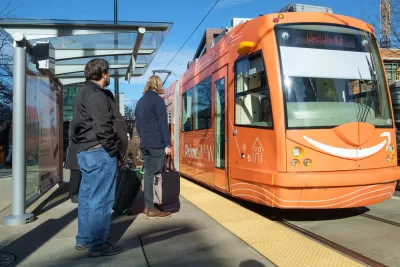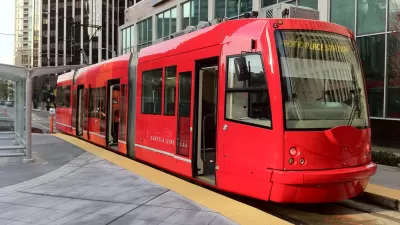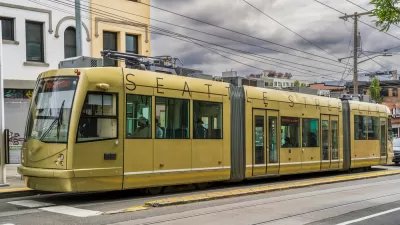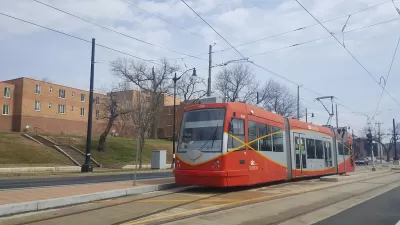A new streetcar extension would complete Seattle's streetcar network in a particularly busy corner of the city's downtown. The mayor doesn’t seem enthused with the idea, even if riders are already enthused with streetcars.

Jon Talton writes a column to lament the failure of the Center City Connector, a 15-block streetcar extension that would complete a streetcar network in several neighborhoods around Downtown Seattle.
"For a city with so much luck, Seattle has done repeated face plants in attempting to build necessary rail transit," writes Talton. "Never miss an opportunity to miss an opportunity. Shoot ourselves in the foot and reload."
This take on Seattle's lack of transit investment might come as a surprise to outsiders, who regularly read of transit success in the city, from increasing bus ridership to increased ridership on waterborne transit to declining solo car commuters. But, Talton cites a significant historical episode to make his case for Seattle as a public transit cautionary tale: "The most notorious mistake was the 1970 failure to pass bonds to build a regional subway system, which would have been 75 percent funded by the federal government."
With the Center City Connector, Talton notes that Mayor Jenny Durkan shelved the project in March (as reported at the time by David Gutman) to study project expenses. According to Talton, the lack of a complete streetcar system would be shame. Unlike other streetcars around the country, Seattle's current system is transporting increasing numbers of users.
"The Center City Connector, which would mostly run along First Avenue from Pioneer Square to meet the South Lake Union line, would be an especially sweet spot for passengers. Among the destinations: Pike Place Market, the Seattle Art Museum, and, nearby, the waterfront and the ferry and cruise terminals," according to Talton.
FULL STORY: Center City streetcar line would complete badly needed transit link

Alabama: Trump Terminates Settlements for Black Communities Harmed By Raw Sewage
Trump deemed the landmark civil rights agreement “illegal DEI and environmental justice policy.”

Planetizen Federal Action Tracker
A weekly monitor of how Trump’s orders and actions are impacting planners and planning in America.

The 120 Year Old Tiny Home Villages That Sheltered San Francisco’s Earthquake Refugees
More than a century ago, San Francisco mobilized to house thousands of residents displaced by the 1906 earthquake. Could their strategy offer a model for the present?

Indy Neighborhood Group Builds Temporary Multi-Use Path
Community members, aided in part by funding from the city, repurposed a vehicle lane to create a protected bike and pedestrian path for the summer season.

Congestion Pricing Drops Holland Tunnel Delays by 65 Percent
New York City’s contentious tolling program has yielded improved traffic and roughly $100 million in revenue for the MTA.

In Both Crashes and Crime, Public Transportation is Far Safer than Driving
Contrary to popular assumptions, public transportation has far lower crash and crime rates than automobile travel. For safer communities, improve and encourage transit travel.
Urban Design for Planners 1: Software Tools
This six-course series explores essential urban design concepts using open source software and equips planners with the tools they need to participate fully in the urban design process.
Planning for Universal Design
Learn the tools for implementing Universal Design in planning regulations.
Clanton & Associates, Inc.
Jessamine County Fiscal Court
Institute for Housing and Urban Development Studies (IHS)
City of Grandview
Harvard GSD Executive Education
Toledo-Lucas County Plan Commissions
Salt Lake City
NYU Wagner Graduate School of Public Service





























